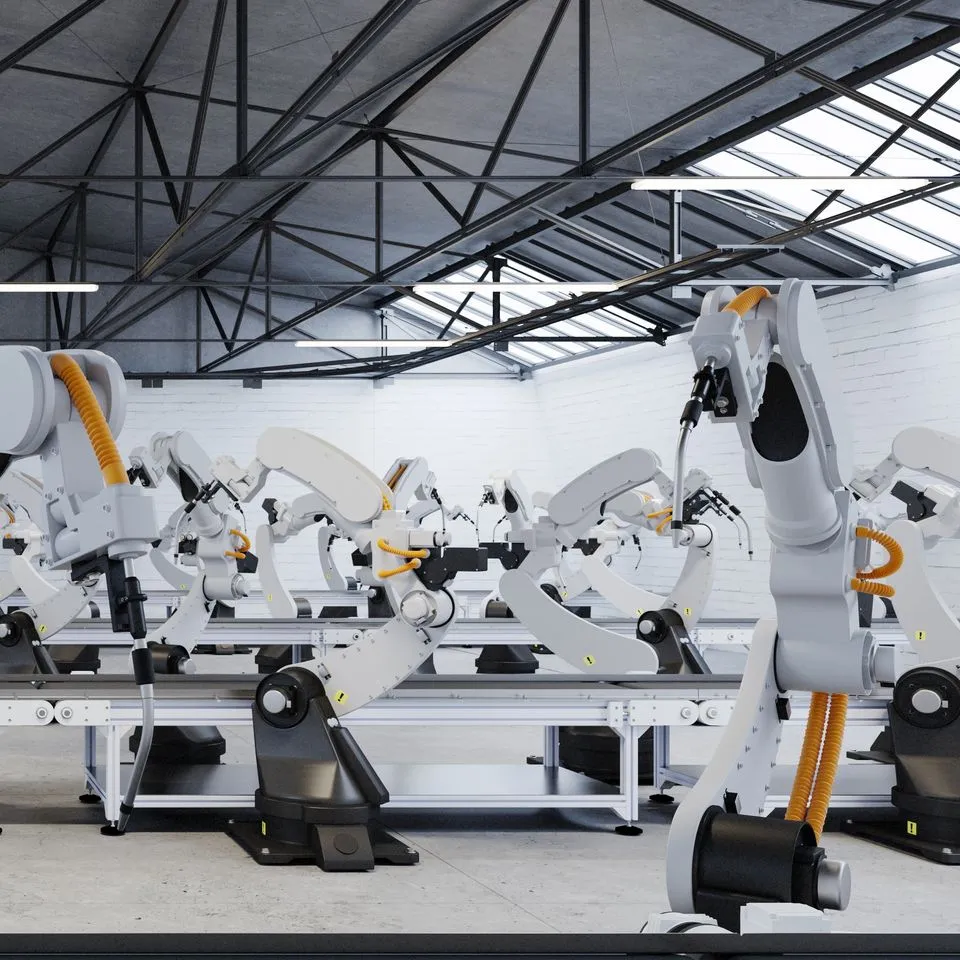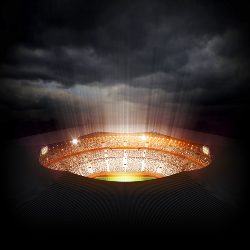Green Horizons Podcast:Understanding Your Electricity Bill
Green Horizons Podcast
The "Green Horizons Podcast" is presented by Hitachi's Environment Business Division. The goal of this podcast is to be a source for valuable insights and strategies in the world of sustainable energy solutions for businesses. In each episode, we dive deep into the world of sustainability and clean energy, examining how clean energy solutions can help transform your business operations with in-depth conversations with industry experts. Our guests include subject matter experts, business leaders and visionaries who are passionate and active about driving innovation and sustainable outcomes. We look forward to being on this journey with you on this transformational journey —one episode at a time.


Solutions Engineer, Manufacturing & Mobility, Hitachi Environment Business Division – North America
Rob has over 30 years of progressive manufacturing operations, engineering and supply chain experience. He holds a Bachelor of Science degree in Industrial Engineering (BSIE) from North Carolina State University (NCSU) in Raleigh, NC and is certified in Production and Inventory Management (CPIM) by APICS.


Solutions Architect, Utilities & Industry, Hitachi Environment Business Division – North America
Udayan’s expertise is in applying digital technology capabilities to architect solutions that address the double bottom-line and delivering a positive social impact while fulfilling business requirements across manufacturing, transportation and smart spaces.


Director, Marketing & Communications, Hitachi Environment Business Division
Roxana Moolla is responsible for sustainability marketing, communications and customer acquisition for several areas of focus including Energy as a Service, EV/electrification, and Circular Economy. She holds a Bachelor of Environmental Studies from the University of Manitoba, Canada and a Bachelor of Architecture from the University of Arizona, and is a GRI Certified Sustainability Professional.
Podcast Transcript
Moolla, Roxana
Welcome to the Green Horizons podcast, your source for valuable insights and strategies in the world of sustainability, presented by Hitachi Environment Business Division. From implementing clean energy solutions to helping your business decarbonize and uncovering new opportunities to lower your energy costs.
Our goal is to equip your business with the knowledge and tools needed to navigate the energy transition. I’m Roxana Moolla, your host, and I’m looking forward to today’s podcast topic and having an engaging conversation with our guests today. I’d like to welcome Robert Crew Solutions engineer and Udayan Joshi, Solutions architect, both with Hitachi Environment Business Division. In this episode, we’re going to discuss the importance of understanding your electric bill and how you can use this information to help reduce your energy costs.
Rob, would you begin by telling us a little bit about what your team does at Hitachi?
Crew, Robert
Thank you, and glad to be here. Roxana sure, our team’s mission is to help our customers achieve their sustainability objectives and meet their carbon emission reduction targets. Hitachi offers innovative solutions combined with flexible business models to help customers with their energy and sustainability goals.
Moolla, Roxana
That’s great. Thank you, Rob. Udayan, do you want to add anything about what our team does?
Joshi, Udayan
Thank you, Roxana and Rob for having me here today. And as mentioned, we here at Environment Business Division at Hitachi – we leverage our extensive ecosystem of internal Hitachi capabilities and the ecosystem of partnerships and alliances to put together these solutions that we will be talking about today – looking forward to today and looking forward to this discussion.
Moolla, Roxana
Great. Thank you, Udayan. So Rob, based on the topic that we have for our discussion today about understanding your electric bill, can you tell us – if you’re a company with one or more facilities? Tell us why reviewing or analyzing your electric bill is important.
Crew, Robert
Well, the classic “if you don’t measure something, you don’t improve it” would be the first note – and energy costs are typically a significant amount of a facility’s operational or production budgets – and a lot of times in that role you the wrong approach is to think “Oh, the electricity bill, it is what it is, you just pay it” and there’s actually, if you dig into the bill itself, there’s areas that you can affect change to and reduce costs, which we’ll speak to a little bit later. You know there’s always pressure to reduce costs in the facility and even planning for budgets, future electricity costs – it’s important and the rates themselves are increasing over time.
So all these things tied in, the electricity itself, it’s also your foot carbon footprint, for Scope 2 – so it defines that. So at the end of the day, you’re probably searching for ways to reduce your electricity bill and the first stop on that journey is to understand what you’re paying for and why. Anything you want to add, Udayan?
Joshi, Udayan
Yes. So, as Rob mentioned, facility management teams and operations teams have had a lot of pressure regarding optimization of cost while supporting growth, and now there’s this new pressure about meeting sustainability goals – specifically, decarbonization goals. So, it is important to understand the background. These teams have been experts at reducing the demand side energy load, and they do this through energy efficiency measures and energy conservation measures, so they have a good handle – this has been going on for 10-20 years – they have a good handle on managing the demand side, so to say. But now, with new technology of microgrids and renewable and distributed energy resources becoming available and more cost approachable, there’s an opportunity to also optimize the supply-side of the energy equation, and that’s really where the energy supply and the related energy bills come into play.
And we’ll definitely be talking more about that as we go longer.
Moolla, Roxana
Great. Thank you both. Rob, you mentioned Scope 2 emissions. Can you just elaborate for those in our audience who may not be familiar with that term? Can you just define what is Scope 2 emissions? What does that mean?
Crew, Robert
For Scope 2, you’re paying somebody for your electricity, and that electricity has a footprint – how it’s made, is it a coal fired furnace, is it a diesel generator – and there’s a carbon footprint for all those activities to produce and deliver the electricity to you. And, as Udayan was talking about, the supply and demand of the electricity, depending on how you source the electricity, like all of a sudden, if you went to renewable sources or had your own battery system, you could reduce your footprint compared to just getting it from a coal-fired environment – so that’s Scope 2.
Moolla, Roxana
Great. Thank you so much. So, let’s move on to understanding what microgrid solutions are, and so – can you help operations managers and sustainability managers or facility managers, specifically in the commercial and industrial sector, can you help them understand what the details of what it means to understand their energy bill, and what does that energy bill tell them?
Crew, Robert
It’s funny, I just got through looking at some bills this morning, and just when you think you understand something, you know it can get really confusing. I’ll speak to that in a minute. But, in simple terms, you want to benchmark – you want to know what you’re paying per month and why is that important.
You know, if you’re doing an energy conservation measure like changing over to LED lighting, you can see the before and after – that’s an obvious, based on just consumption. But, within the bill itself, and depending on your rate structure, my coach would be to understand what your rate is. The power company publishes a rate structure – it’s really exciting reading. But, those are kind of the rules of engagement.
And then your bill itself, as that rate is applied to you and how you’re using electricity each and every day, they’re cost drivers and they’re broken down into really three big buckets. One of them is called energy, and that is just a per kilowatt rate of the energy you consume – kind of a “pay as you go”. The other one is demand cost – and we’ll break that one down. That’s usually a tremendously expensive thing the utility bills you for, and it’s not always well detailed. And then the third one are fees – a lot of those are fees and things you can’t control – they’re regulatory, they’re taxes, they might be some kind of recovery program that you’ve inherited.
But what we want to focus on is the energy and the demand aspects. So the energy cost is just a straight consumption. And if you looked at a map of the US, the range is somewhere between 6 cents and over 20 cents a kilowatt – that’s a pretty big swing. But in simple terms, people on the coast generally pay more electricity than the people in the middle of the country. And Alaska and Hawaii pay even more, just crazy amounts for straight electricity.
But that other element we spoke of – demand costs – think about, it isn’t always about just your energy consumption, it’s about all the neighbors and people around you, ok. And the demand cost is there to help the – it’s not really a penalty – it’s the power company – you always want to be able to turn on your power and have it there, available, ok. But they really don’t know what’s going on behind your four walls, when you’re turning on and off equipment, how you’re ramping things up. So they’ve got to have a spinning reserve of electricity available at all times to provide for this upside and demand.
But as more and more people have demands stacking on top of each other, that peak can get really quick really fast, and they’re going to have to invest in more infrastructure to support that, more transformers, more transmission lines, more generation capabilities. So, this is a way for the power company to plan and recoup for the costs in advance of the need, because they’re starting to see more and more peaks, they’re realizing, “hey, we’re at 80% of our capacity, we need to add some more things”.
Then there’s a lot of programs and I know, I’m sure Udayan will speak to some of them, but you know, it helps them with the infrastructure, the peaks as I talked about, when you are stacking on top of them, it’s a problem for the utility. And there’s also different types of demands – one of them is called the time of use, which is in the morning when everybody’s getting up and making their coffee and taking showers and running their hair dryer -that’s a peak time for a company and certainly at night is another peak time. And seasonal – could be summertime…air-conditioning systems – there’s some more macro-type things at play. So it’s really the demand cost is impact on when you use electricity, and sometimes it’s a choice, sometimes it’s not a choice.
But looking at your bill, that’s a good thing because you can kind of see “I’m really getting expensive during this period of time, maybe I can change that activity from a morning to the afternoon and save some money”. So, the energy bill quantifies the cost of your energy based on patterns of use. Udayan, do you have anything to add based on these patterns?
Joshi, Udayan
Sure. So Rob told us that there is very important information in the energy bill, right? It tells you not only how much did you pay for the energy, the quantum of energy that you use, but the energy bill also contains something called demand charges that Rob told us about, right, which are based on when you hit certain peak limits, so to say, and at what time do you consume what energy? That’s the kind of information that the utility used to give you a bill at the end of the month. But for you to be able to address those additional charges, which typically are at a much higher rate compared to your baseline energy rate, you need to drill down deeper into when those particular peaks or when those particular charges occurred.
The utility bill tells you that sometime during the month you hit a certain peak, but then for you to decide if you can do something about flattening that peak and lowering your demand, by adjusting when and how you use your energy, you want to compare the information from the energy bill with something called interval data from your metering infrastructure – metering or sub-metering infrastructure. So if you have energy meters connected to your power distribution panels and your lines and your different parts of operations, then those typically would be set up to measure your energy consumption in 15 minute, 30 minute, one hour type of intervals.
This interval data will tell you when and how those peaks are occurring, what machines, what facilities, when running simultaneously are causing those peaks. It’s those kind of insights that will help you understand what is causing the peaks, what is causing the demand that is charged at a higher rate and is causing your overall energy bill to go up.
So, to summarize, the data from the energy bill is important, but it makes more sense and gives insights from an analysis perspective when correlated to what is known as interval data from the sub metering infrastructure. So, when we combine both of those data sets, that creates the input for modeling the use of microgrids, solar energy, wind energy, battery energy storage systems. So the combination of these two data sets is the input for being able to determine if any of these new distributed energy resources or microgrid technologies will be able to help you.
Moolla, Roxana
So what I’m hearing you say is the interval data provides a level of granularity that adds a great deal of clarity to the energy modeling that’s necessary to be able to understand how to design a solution?
Joshi, Udayan
Exactly, absolutely. The analysis of the energy bill tells us how we are getting charged for the energy that we are using, and then the interval data provides insights into when and how are we using that energy that is causing those charges to happen.
Moolla, Roxana
That’s great, that’s great – that’s really good to understand, thank you so much. So, based on that information, Rob, can you help us how this helps with understanding the challenges of reducing costs while supporting growth as well as addressing decarbonization targets that companies may have?
Crew, Robert
Yeah, there’s a quick story. Think about an automotive manufacturer and their peak shaving using diesel generators – what’s called a demand response program today. And the utility company, when all the neighbors are using a lot of electricity and starting to peak, they send them a signal and they turn on those generators, and at that point, this might not be the greenest solution from a carbon standpoint, but from a demand peak shaving, they’re using those generators to shave, but they’re expending a lot of diesel fuel too, a lot of money to do that.
But the comedic thing here, building on what Udayan was saying, the value of putting the interval data together with the utility bill analysis, they thought they were saving a lot of money. And we what we uncovered is, one particular month, for whatever reason, the demand response didn’t work and they spent $9000 on diesel fuel, and still paid demand charges on top of that – and the demand charges were way more than $9000 of diesel fuel. So it is important to kind of connect those two pieces and overlap them and make sure things are working the way you had attended, if that was your energy plan.
But Udayan discussed the granularity – the 15, 30 or 1-hour increments of data for a whole year, and putting that over the top of the electricity bill, and that way you can understand the variations and figuring out what your business is driving. And back to my comment earlier about budgets – that might be a historical look – but what’s gonna happen next year?
And we know that there’s typically two types of changes: one of them is the rates most likely are going to increase now, with everything being electrified. The power companies are going to be raising rates – it’s not “if”, it’s “when”. What that escalation rate is going to be unique to everybody’s unique situation. So the price is gonna go up, but also you’re probably going to change your capacity over time, ok. So your factory might change – it might go up, it might go down. So, back to the budget thing – you need to kind of plan for the future and that big cost is important. So, to me, that’s the most important thing about linking these two bits of data together.
And the sustainability element is another one, where Udayan was talking about different solutions with the solar system and a battery together, that’s going to help your carbon footprint, if it makes sense. But you’ve got to run the numbers, it’s got to be justified.
Moolla, Roxana
And how far back do you have to look at that energy data, the electric bill? How many…is it many, many years of data…just a month or two?
Crew, Robert
Well, I mean, you want to, like any analysis, if you can go a couple of years, that’s great, but I think 12 months is adequate, and the most recent 12-month window would be preferred.
Just the other day, we were looking at a client and they gave us kind of half of this year, and we married it up with the ending half of the previous year, and it was very apparent that they’ve had a big rate increase, just looking at the numbers. They went from like $0.07 to $0.11. But it’s just odd when you know normally January through December, but because of the way it was staggered, it was really apparent to me, which is building on what I said earlier about the rate increases, which is something a lot of people aren’t thinking about today. So I think the power companies are really going to be hitting with the rates and that’s going to make the whole horizon very differently, as far as costs.
Moolla, Roxana
That’s great. And so, Udayan, understanding that what Rob was saying about energy bill and interval data, what would you do then with that information?
Joshi, Udayan
Yes, it is very important to talk about the next step because that’s where the magic happens, right? You take all of this information about how you’re getting charged for energy and then what are you doing with your usage that is causing those energy charges. When you take that information and you look at it through tools and systems that we use for modeling these solutions, basically what we’re trying to look at is, if there is an opportunity to use microgrid systems which combine self-generation through solar and or wind with battery energy storage solutions, and by doing so, you have the opportunity to first of all reduce your load on the grid by self-generating energy, you potentially have the opportunity to draw a lesser amount of energy from the grid, and which means the cost of investing in the capacity to generate needs to be compared against the savings that could be achieved, and in order for these financial calculations to be accurate, we need to be specific about when will the regeneration or self-generation occur, renewable generation occur, and what will be the specific rate that is likely to be charged and therefore what is likely to be the specific saving that is possible from self-generation.
So it is important to get to the interval data and to use much more precise inputs in order to make a financial decision, right? It is also important to understand the rate information that Rob was talking about earlier, right?
So based on when you generate the energy, if that does not match with the specific time at which you are charged peak rates, you may want to use a battery energy storage to store the energy that is generated at a time when at a time when it is not coincident with your peak rates, and maybe use the battery energy storage to drive the load when it’s expensive to take that energy from the grid for example. So is it possible to shift the demand right in time – is it possible to self-generate at a more optimal cost than the rate at which the utility supplies you energy?
That is the type of modeling that we aim to achieve using these data inputs, and as a result of which we can make a determination of whether microgrid systems will help you in meeting your energy cost optimization and decarbonization goals, and if so, what is the right size of the system that you need to use or deploy in order to achieve the maximum potential benefit that you could stand to gain out of this.
Moolla, Roxana
This is really great and you know, Rob, you mentioned as well this increase from 7 cents to eleven cents. That’s a more than 50% increase and and so certainly what I’m hearing you say is that understanding the bill, recognizing the areas where you may be unaware, even perhaps, that you had this huge rate increase at certain times, that kind of awareness and understanding the electric bill is so important. So are there any last thoughts you’d like to leave our audience with?
Crew, Robert
Yes, I’d like to go back to the initial comment where take a look at your bill and let somebody else help you take a look at it. We’d be more than happy to take in a year’s worth of your data if you’re willing to share with us and just give you some insight. And you’ll be surprised, there’s probably an opportunity there to save some money and either internally to how you’re running your shop or externally, how you’re pulling the power from the grid and have an alternative source, as Udayan was talking about, potentially. And the first step is just reaching out and let’s take a look at the data together. And the interval data can be a little challenging sometimes, because a lot of people don’t even realize it’s available and you could call the power company direct or we’ll be happy to call the power company for you – I don’t mind being on hold, you know, with the elevator music while I’m waiting for the interval data.
Moolla, Roxana
Right. And those bills can be complex, right? I think I’ve heard you say that these bills can be quite complex, so certainly having help from experts like yourselves is a wonderful thing, I think to have available as a resource. Udayan, do you have any other last thoughts you’d like to add?
Joshi, Udayan
So, what I would like to add is – think of it as the cherry on top of the cake, right. These technologies can not only help you lower your energy bill and your carbon footprint, but then in the process, you’re also creating capacity that will help you with being more resilient in case of the ever increasing Black Swan type disruption events that we are anticipating will happen. And it creates flexibility – as you add more growth, you have the opportunity now to schedule your growth in a way that is also energy efficient and environmentally friendly. So, that’s the cherry on top of that cake of energy savings and sustainability.
Moolla, Roxana
That’s great. Well, thank you so much. So as we come to the end of this episode, what I’ve heard you say is that the goal is to minimize monthly electricity expenditures and safeguarding against potential rate increases is really an important aspect of lowering costs and decarbonizing and helping to drive towards sustainability goals.
And Rob, Udayan, you’ve both provided such compelling information today about why understanding your energy bill is crucial for businesses looking to improve their operations and achieve their sustainability objectives and reduce their carbon emissions.
So when it comes to analyzing your electric bill, Rob, you know, I heard you say that if you don’t measure something, I think you said this right at the beginning – if you don’t measure it, you can’t improve it. So energy costs are comprising a significant part now of operational budgets and it’s really important to recognize that there are actionable steps that you can take to reduce those costs and optimize consumption.
I think I’ve heard you both say that, so to wrap up, Hitachi, certainly we have a commitment to innovation and sustainability and we offer a diverse array of transformative solutions and a comprehensive suite of services designed not only to meet but exceed the evolving energy and sustainability needs of businesses today, specifically and especially in the commercial and industrial sector.
So if you’re interested in learning more about how we can help your business with our holistic approach to achieving energy efficiency targets, please feel free to email us at sustainability@hal.hihitachi.com.
Thank you again, Rob and Udayan, for being here and sharing your insightful expertise with us. We really appreciate it, and thank you all, our audience, for listening to this episode of the Green Horizons Podcast – and let’s stay connected as we continue this transformational journey with you one episode at a time.
The future grid will need to accommodate growing supply volatility from intermittent resources and quickly-evolving fuel infrastructures, as well as increased demand-side functionality with distributed energy resources and the electrification of transportation, buildings, and industry. These trends will create significant new opportunities for technologies that decouple legacy dependencies and increase grid flexibility.
Sign up for our newsletter delivered directly to your inbox.
* Required Field
Learn more about Hitachi energy solutions
For further information on how Hitachi’s energy solutions can help C&I companies with resilient, reliable, and flexible solutions, contact us.
Contact Us
* Required Field



